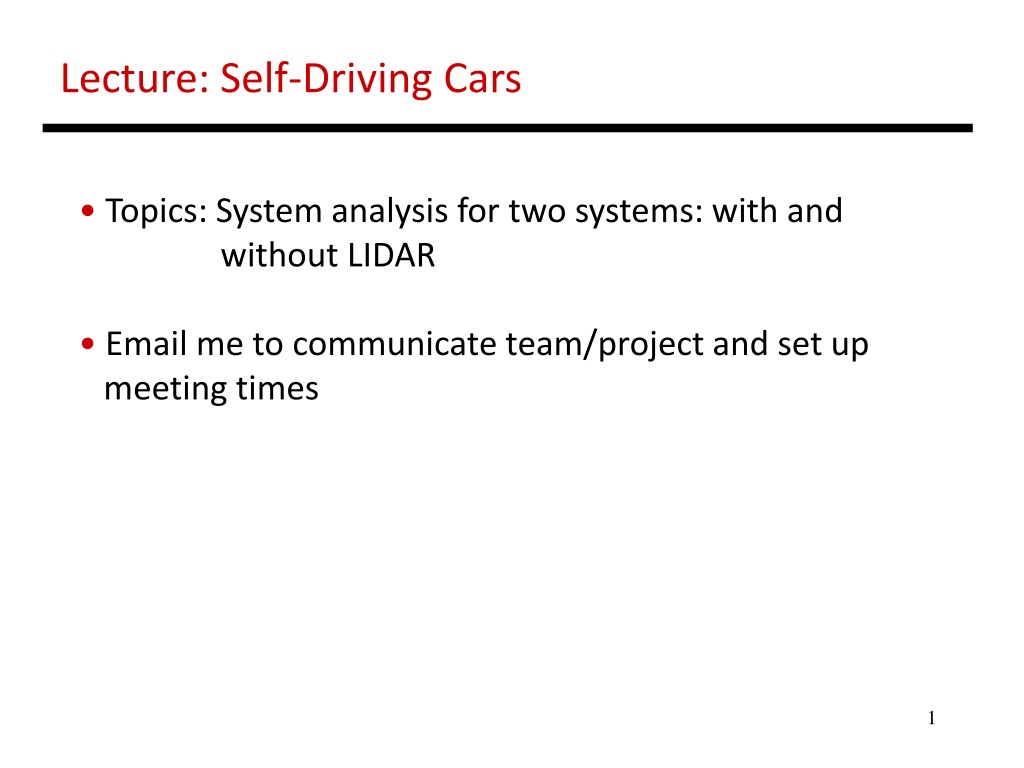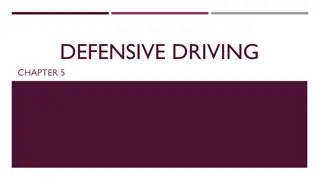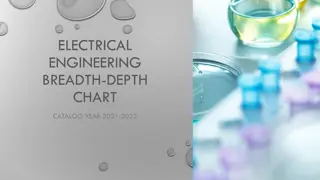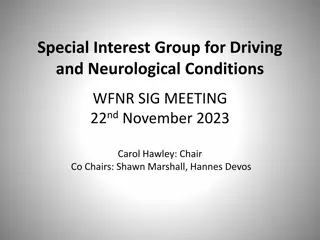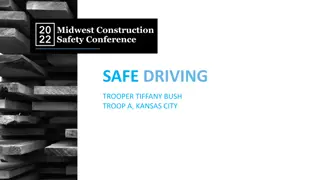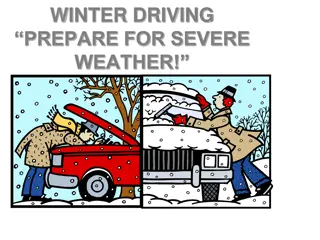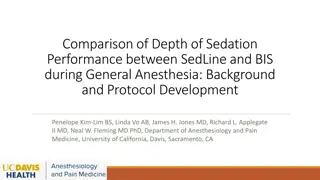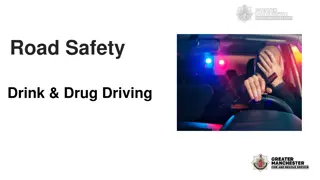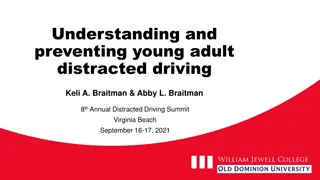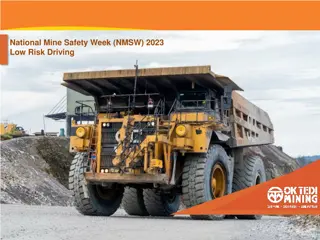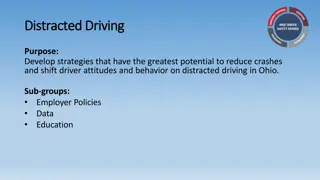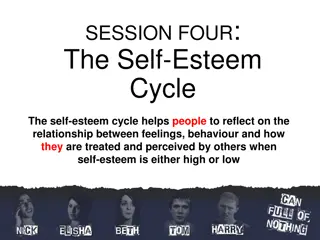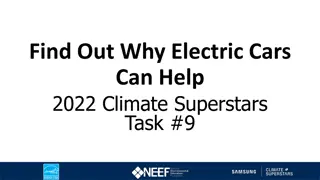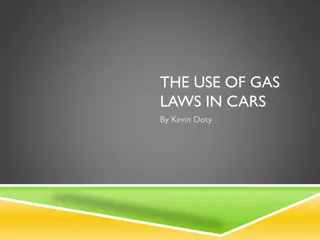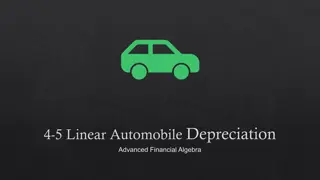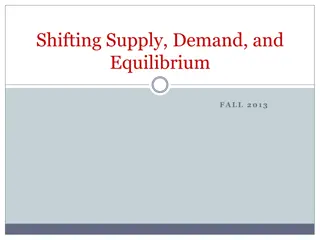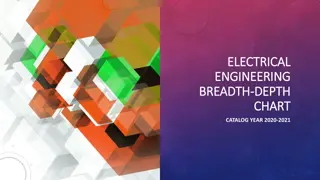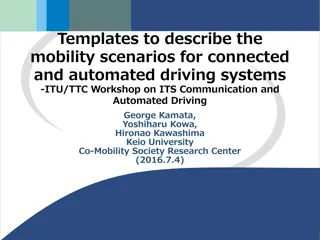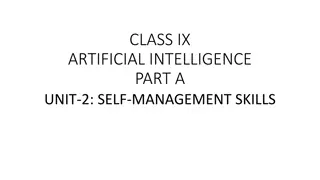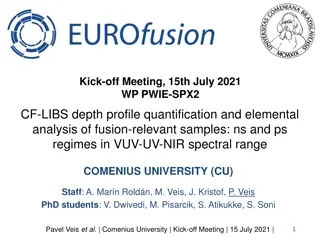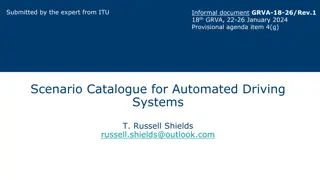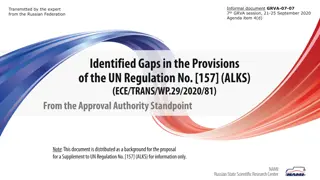In-Depth Analysis of Self-Driving Cars Systems
This lecture explores the system analysis for self-driving cars with and without LIDAR technology, discussing levels of autonomy, cost considerations, vision-based solutions, localization challenges, latency issues, power management, and key algorithms used in self-driving technology.
Download Presentation

Please find below an Image/Link to download the presentation.
The content on the website is provided AS IS for your information and personal use only. It may not be sold, licensed, or shared on other websites without obtaining consent from the author. Download presentation by click this link. If you encounter any issues during the download, it is possible that the publisher has removed the file from their server.
E N D
Presentation Transcript
Lecture: Self-Driving Cars Topics: System analysis for two systems: with and without LIDAR Email me to communicate team/project and set up meeting times 1
Self-Driving Cars Intro Several players: Waymo, Tesla, Mobileye, Uber, NVIDIA Xavier SoC, Audi zFAS board Level 2 autonomy: car handles steering/accel in limited conditions, (alert) driver handles rest (hands-off) Level 3 autonomy: car handles everything in limited conditions, driver serves as back-up (eyes-off) Level 4 autonomy: driver helps only when entering unmapped areas or during severe weather (mind-off) Level 5 autonomy: no steering wheel 2
LIDAR vs. No-LIDAR LIDAR is very expensive ($75K); hence, Tesla and Mobileye are focusing on vision-based solutions Recent announcements claim that top-of-the-line LIDAR may cost $7,500, with short-range LIDAR being under $5K https://techcrunch.com/2019/03/06/waymo-to-start-selling-standalone-lidar-sensors/ As we ll see, LIDAR has other latency problems 3
Self-Driving Car Pipeline (Vision-Based) Need decimeter-level accuracy for localization; GPS fails; localizer gives them centimeter-level accuracy Need a locally stored map (41 TB for USA) 4
Metrics 99.99th percentile tail latency of 100ms would be faster than fastest human reaction times (target supported by industry, but will likely be a moving target); 10 frames/sec Power and cooling (need cooling because the computers will be inside the cabin); 77W cooling for every 100W dissipated; a 400W computer reduces MPG by 1; a CPU+3GPU system (~1000W) lowers driving range by 6% (and 11.5% once you add storage+cooling) Also need high storage and reliability (recall that Tesla FSD executes every computation twice) 5
Algorithms Object detection: YOLO; DNN based Object tracker: GOTURN; DNN based and a few book-keeping tables Localization: ORB-Slam; lots of trigonometric calculations Motion and Mission planning: MOTPLAN and MISPLAN from Autoware 6
Bottleneck Analysis DNNs implemented with Eyeriss and EIE 7
Feature Extraction Ops in feature detector not clear. Rest are trig ops that are implemented with LUTs 9
Results Power for a single camera (Tesla has 8) For the whole system, GPU lowers driving range by 12% and ASICs by 2% 10
Scalability Results VGG accuracy improves from 80% to 87% when resolution is doubled Not clear how the bottlenecks change (compute, memory, reuse patterns) 11
Summary Detection, Localization, Tracking, Planning are major steps The first three take up 94% of compute Contributions: a pipeline with publicly available frameworks, bottleneck analysis, acceleration with GPU/FPGA/ASIC GPUs and ASIC offer two orders of magnitude speedup, but GPUs consume too much power More work remains lower latency, lower power, higher resolution, feature extraction, other bottlenecks 12
LIDAR-based Approach [Zhao et al.] Joint work with Pony.AI; characterization based on several hours of driving on their test fleet over 3 months They rely on LIDAR and their software pipeline has relatively little DNN 13
LIDAR Pipeline Several steps, with segmentation being a major overhead Segmentation extracts useful semantic info (relevant objects) from the background The latency is worse when there are more nearby objects, since there are more reflected points to deal with This leads to high variance, especially when collisions are more likely 15
LIDAR Perception Latency Max time is a relevant metric because it disproportionately impacts safety They observe that long LIDAR perception latency also disproportionately impacts overall latency (The LIDAR sampling rate is 100ms) 16
Safety Score They compute a safety score that factors in the response time along with velocity/acceleration They design a predictor to estimate response time based on the count/proximity of objects in the scene and how hardware resources (CPU/GPU) are allocated to each part of the software pipeline 17
References The Architectural Implications of Autonomous Driving: Constraints and Acceleration , S.-C. Lin et al., ASPLOS 2018 Towards Safety Aware Computing System Design in Autonomous Vehicles , Zhao et al., Arxiv, 2019 Driving into the Memory Wall , Jung et al., MemSys 2018 18
